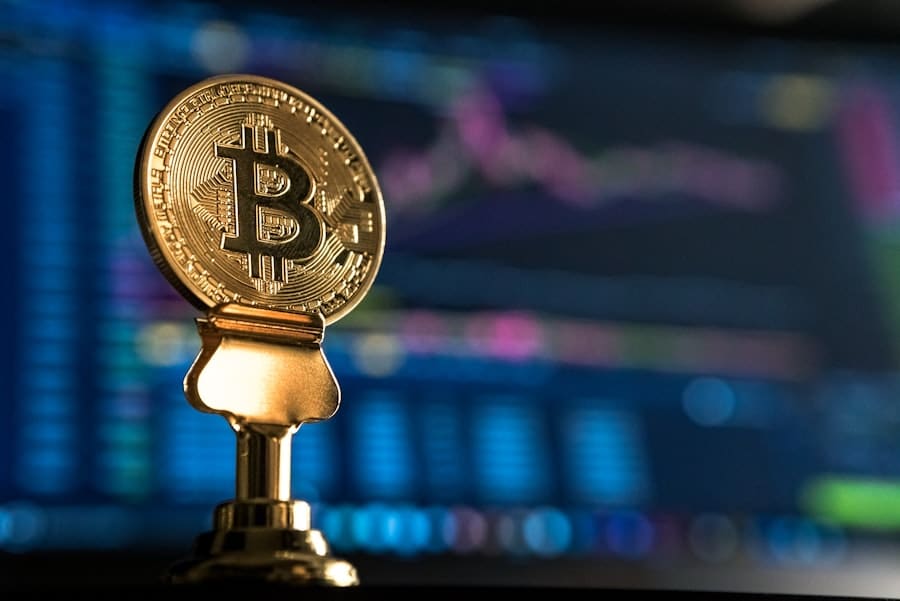In recent years, the gaming industry has witnessed a significant transformation with the emergence of in-game assets, which include virtual items, skins, characters, and even real estate within digital worlds. These assets have evolved from mere collectibles to valuable commodities that can be traded, sold, or used to enhance gameplay. As players invest time and money into acquiring these assets, the question of ownership becomes increasingly pertinent.
Traditionally, players have operated under a model where they purchase items but do not truly own them; the game developers retain control over these assets. This lack of true ownership has led to frustrations among gamers who feel that their investments are at the mercy of developers who can alter or remove items at will. The need for true ownership has become more pronounced as the gaming community grows and diversifies.
Players are no longer just passive consumers; they are active participants in a digital economy where their contributions and investments deserve recognition and protection. The rise of competitive gaming and esports has further fueled this demand, as players seek to monetize their skills and assets. The concept of true ownership implies that players should have the ability to control, trade, or sell their in-game assets freely, without restrictions imposed by game developers.
This shift towards recognizing player ownership is not just a trend; it represents a fundamental change in how games are designed and monetized.
Key Takeaways
- True ownership of in-game assets is becoming increasingly important as digital assets hold real value for gamers.
- Blockchain technology provides a secure and transparent way to establish true ownership of in-game assets.
- Gamers benefit from true ownership by having the ability to buy, sell, and trade assets across different games and platforms.
- Implementing blockchain for in-game assets faces challenges such as scalability, interoperability, and regulatory concerns.
- Successful examples of blockchain implementation for in-game asset ownership include games like CryptoKitties and Gods Unchained, which have created thriving economies around their digital assets.
Understanding Blockchain Technology and Its Role in In-Game Asset Ownership
Blockchain technology serves as the backbone for achieving true ownership of in-game assets. At its core, blockchain is a decentralized ledger that records transactions across multiple computers in a way that ensures security, transparency, and immutability. Each transaction is grouped into blocks and linked together in a chronological chain, making it nearly impossible to alter past records without consensus from the network.
This decentralized nature eliminates the need for a central authority, allowing players to have direct control over their assets. In the context of gaming, blockchain enables the creation of non-fungible tokens (NFTs), which are unique digital representations of in-game assets. Unlike cryptocurrencies such as Bitcoin or Ethereum, which are fungible and can be exchanged on a one-to-one basis, NFTs are distinct and cannot be replicated.
This uniqueness is crucial for establishing true ownership, as each NFT can represent a specific item or character within a game. When a player purchases an NFT representing an in-game asset, they gain verifiable ownership recorded on the blockchain, allowing them to trade or sell it independently of the game developer. This paradigm shift empowers players by granting them rights similar to those they possess in the physical world.
The Benefits of True Ownership for Gamers and Game Developers

The benefits of true ownership extend beyond just the players; game developers also stand to gain significantly from this shift. For gamers, true ownership fosters a sense of agency and investment in their gaming experience. Players can buy, sell, or trade their assets on secondary markets, potentially recouping some of their initial investments or even profiting from their gameplay.
This economic incentive can lead to increased engagement and loyalty, as players feel more connected to their virtual possessions. For game developers, embracing true ownership can create new revenue streams and enhance player retention.
This means that every time an asset is resold on the market, the original creator can earn a percentage of that sale. Such mechanisms not only incentivize developers to create high-quality content but also encourage them to foster vibrant communities around their games. Additionally, true ownership can reduce instances of fraud and cheating, as blockchain’s transparency allows for easy verification of asset provenance.
Overcoming Challenges and Concerns in Implementing Blockchain for In-Game Assets
Despite the promising potential of blockchain technology for in-game asset ownership, several challenges and concerns must be addressed before widespread adoption can occur. One significant hurdle is the technical complexity associated with integrating blockchain into existing gaming infrastructures. Many developers may lack the expertise or resources to implement blockchain solutions effectively.
Additionally, there is a need for interoperability between different blockchain networks to ensure that assets can be transferred seamlessly across various games and platforms. Another concern revolves around environmental sustainability. The energy consumption associated with certain blockchain networks, particularly those using proof-of-work consensus mechanisms, has raised alarms about their ecological impact.
Game developers must consider adopting more energy-efficient alternatives or layer-2 solutions that mitigate these concerns while still providing the benefits of decentralization and security. Furthermore, regulatory uncertainties surrounding cryptocurrencies and NFTs pose challenges for developers looking to navigate legal frameworks while ensuring compliance with consumer protection laws.
Examples of Successful Implementation of Blockchain for In-Game Asset Ownership
Several pioneering projects have successfully implemented blockchain technology to facilitate true ownership of in-game assets, setting precedents for future developments in the industry. One notable example is “Axie Infinity,” a blockchain-based game where players collect, breed, and battle fantasy creatures called Axies. Each Axie is represented as an NFT on the Ethereum blockchain, allowing players to buy, sell, or trade them on various marketplaces.
The game’s economy has flourished, with players earning real income through gameplay, demonstrating how blockchain can create sustainable ecosystems. Another example is “Decentraland,” a virtual reality platform where users can purchase parcels of land as NFTs. Players can build and monetize their virtual properties while retaining full ownership rights over their digital real estate.
The platform has attracted significant investment and interest from brands looking to establish a presence in the metaverse.
The Future of True Ownership in the Gaming Industry

As the gaming industry continues to evolve, the concept of true ownership is likely to become increasingly mainstream. With advancements in blockchain technology and growing awareness among gamers about their rights regarding digital assets, developers will need to adapt to this changing landscape. The integration of true ownership could lead to more player-centric game designs that prioritize user experience and community engagement.
Moreover, as more games adopt blockchain solutions, we may witness the emergence of cross-game economies where players can transfer assets between different titles seamlessly. This interconnectedness could revolutionize how players interact with multiple games and platforms, fostering collaboration and competition across diverse gaming experiences. The future may also see regulatory frameworks develop around digital asset ownership, providing clearer guidelines for both players and developers while ensuring consumer protection.
How Blockchain Enables Secure and Transparent Transactions for In-Game Assets
One of the most compelling advantages of using blockchain technology for in-game asset ownership is its ability to facilitate secure and transparent transactions. Each transaction involving an NFT is recorded on the blockchain in a tamper-proof manner, ensuring that ownership history is easily verifiable by anyone with access to the network. This transparency helps build trust among players who may be wary of scams or fraudulent activities in secondary markets.
Additionally, blockchain’s decentralized nature means that players do not have to rely on centralized platforms that could impose restrictions or fees on transactions. Instead, they can engage directly with one another through peer-to-peer marketplaces or decentralized exchanges. This autonomy not only empowers players but also reduces costs associated with intermediaries, allowing for more favorable trading conditions.
As players become more accustomed to these secure transaction methods, it is likely that they will demand similar standards across all aspects of their gaming experiences.
The Potential Impact of True Ownership on the Gaming Economy
The introduction of true ownership through blockchain technology has the potential to reshape the entire gaming economy fundamentally. By allowing players to own their in-game assets outright, a new layer of economic activity emerges where virtual items can be treated as real-world commodities. This shift could lead to increased investment in gaming as players view their digital possessions as valuable assets rather than ephemeral purchases.
Furthermore, true ownership could democratize access to wealth generation within gaming communities. Players from diverse backgrounds could participate in economic activities previously reserved for a select few, leveling the playing field and fostering inclusivity within gaming ecosystems. As these economies grow and mature, we may see new business models emerge that prioritize player engagement and satisfaction over traditional monetization strategies focused solely on microtransactions or pay-to-win mechanics.
In conclusion, the rise of true ownership facilitated by blockchain technology represents a transformative moment for both gamers and developers alike. As this paradigm shift continues to unfold, it will undoubtedly shape the future landscape of the gaming industry in profound ways.
In the rapidly evolving world of digital gaming, blockchain technology is revolutionizing the way players perceive ownership of in-game assets. The article “How Blockchain Enables True Ownership of In-Game Assets” delves into how blockchain provides a secure and transparent method for players to truly own their digital items, independent of the game developers. For those interested in exploring how technology is transforming other sectors, the article on the best software for working with piles of numbers offers insights into tools that enhance data management and analysis, showcasing the broader impact of innovative software solutions across various industries.
FAQs
What is blockchain technology?
Blockchain technology is a decentralized, distributed ledger that records transactions across many computers in such a way that the registered transactions cannot be altered retroactively. It is the underlying technology behind cryptocurrencies like Bitcoin and Ethereum.
How does blockchain enable true ownership of in-game assets?
Blockchain enables true ownership of in-game assets by providing a secure and transparent way to track and transfer ownership of digital assets. This means that players have full control and ownership of their in-game items, and can transfer or sell them outside of the game environment.
What are the benefits of using blockchain for in-game assets?
Using blockchain for in-game assets provides benefits such as increased security, transparency, and ownership rights for players. It also allows for interoperability between different games and platforms, as well as the ability to create unique, scarce digital items.
How does blockchain technology prevent fraud and counterfeit in the gaming industry?
Blockchain technology prevents fraud and counterfeit in the gaming industry by creating a transparent and tamper-proof record of ownership for in-game assets. This makes it difficult for fraudulent activities such as duplicating or counterfeiting digital items.
Can blockchain technology be used for other industries besides gaming?
Yes, blockchain technology can be used for a wide range of industries beyond gaming, including finance, supply chain management, healthcare, and more. Its secure and transparent nature makes it suitable for any industry that requires secure and traceable transactions.

